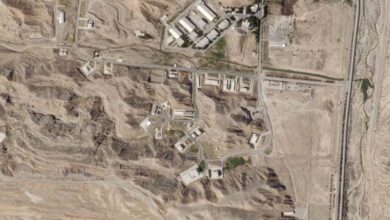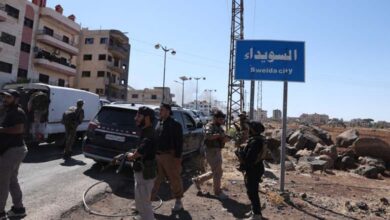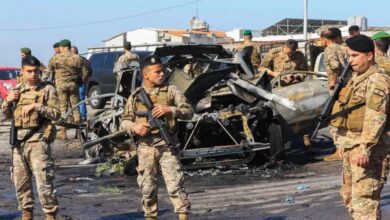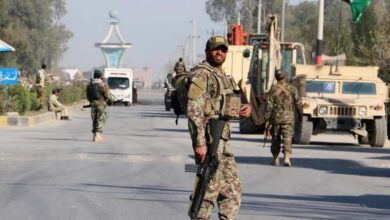Hungry in Gaza: When Chaos Devours the Loaf of Life
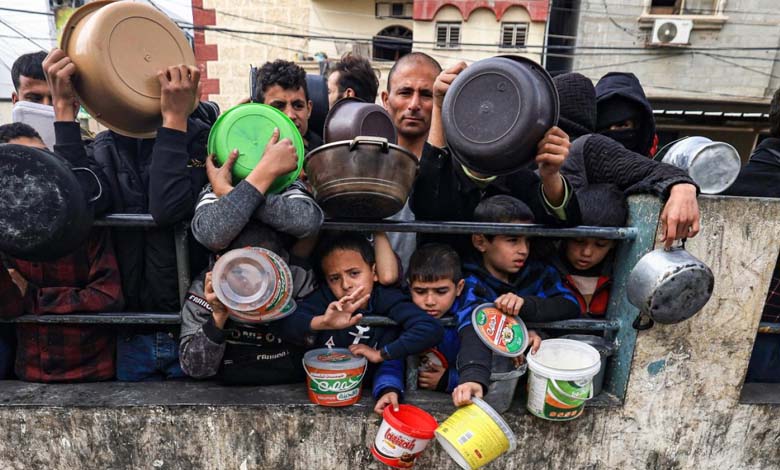
After 22 months of war, starving crowds scramble for the few food supplies entering Gaza—risking their lives under fire, looted by criminal gangs, or seized amid organized chaos without reaching those most in need.
-
Gaza’s Humanitarian Crisis Shifts Western Diplomacy Toward Recognizing Palestine
-
Worst-case famine scenario: UN report warns of humanitarian catastrophe in Gaza
Following a partial ceasefire declared by Israel under international pressure due to famine risks, humanitarian aid began flowing again—but in quantities deemed grossly insufficient by relief agencies.
The few deliveries triggered tragic scenes: desperate crowds rushing towards food-laden trucks or parachute drop zones, implemented in recent days by the UAE, Jordan, the UK, and France—people risking life and limb for scraps of nutrition.
-
Netanyahu Caught in the Military Trap over Gaza: Generals Rebel, Soldiers Absent
-
What Is the Fate of the Gaza Truce? Hamas Responds to Witkoff
In El-Zawaida, central Gaza, emaciated Palestinians surged toward plane-dropped relief packages, tearing them apart in dust clouds. “Hunger has driven people to fight each other with knives,” said Ammar Zaqout, who came seeking aid.
To prevent chaos, WFP drivers were instructed to stop and let people grab supplies themselves—but tragic incidents still occurred. In Zikim, a man hit by a falling sack of flour recounted: “A truck tire nearly crushed my head while I lifted the sack.”
-
A Break in Khan Younis Gets Elite Israeli Unit Pulled from Gaza
-
Gaza Truce : Just 200 Meters Separate Israel and Hamas
Near Rafah, Mohammed Abutta said he arrived early to queue for flour or a little rice or lentils. “Suddenly gunfire broke out … people ran, children, women, elders … blood, injuries, deaths.”
According to the UN, around 1,400 Gazans have died since May 27, mostly while waiting for aid. The Israeli army denies targeting civilians, claiming it fires warning shots when people approach too closely.
-
“I can’t walk anymore”: When journalists, the hungry, and medics collapse in Gaza
-
UN warns of suffocating Deir al-Balah in Gaza… the last lifeline
International groups denounce repeated Israeli hurdles—denied border permits, customs delays, limited and unsafe crossings—all of which fuel disorder.
One UN official revealed that Israeli forces changed WFP loading plans at Zikim last minute, mixing up cargos and forcing convoys to depart prematurely without adequate security.
At Karem Abu Salem crossing, an NGO source said they were forced to use a dangerous route, while a safer path remains inaccessible.
-
“I pretended to be dead to survive”: How Gaza’s breadlines turned into graveyards
-
Gaza Truce: U.S. Positive Signal, Israeli Flexibility and a U.N. Alarm
Criminal gangs pillage aid, storm warehouses, and resell supplies at exorbitant prices. Mohammed Shhada of the European Council on Foreign Relations described it as a “Darwinian test” where only the strongest survive, while the most desperate cannot run or fight for a bag of flour.
Jean-Guy Fatou of MSF noted: “This is extreme capitalism—child thieves sent by traffickers to die at distribution points.” Flour bags may sell for over $400 for 25 kg in Gaza markets.
-
Gaza: 20 Dead in Stampede for Aid in Khan Younis
-
Buffer zone or bargaining chip? What you need to know about Gaza’s new Magin Oz corridor
Israel has repeatedly accused Hamas of diverting UN aid, leading to a total blockade between March and May, and the creation of the Israeli-U.S.-backed “Gaza Humanitarian Foundation.” Most NGOs refuse to work with it, calling its four distribution points for over two million people “death traps.”
Israel’s Prime Minister’s office claimed Hamas repeatedly stole humanitarian aid by shooting at Palestinians. However, senior Israeli officials told The New York Times that while Hamas may have seized some aid from NGOs, there was no evidence of systematic theft from the UN.
-
Gaza Truce: Israel Loosens Its Red Lines and Steps Back on Morag Corridor
-
Bloody Morning in Gaza: 31 Killed in Israeli Strikes Including Women and Children
Shhada dismisses the idea of Hamas’ organized power base: “They’re now decentralized cells hiding in tunnels or destroyed houses. Israel’s drones hunt them instantly.”
During the previous ceasefire, Gazan police—including Hamas members—helped secure aid convoys. The current power vacuum, however, leads to insecurity and looting.
Bushra al-Khaldi (Oxfam) stated requests to Israeli authorities to secure convoys and warehouses were widely ignored. Some NGOs allege Israeli forces allowed gangs to proliferate and pillage freely.
-
To Resolve the Gaza Truce Deadlock: A New Map on Netanyahu’s Table
-
Stalled Gaza Truce Talks… The Israeli Withdrawal Map Sparks Fresh Tensions
UN humanitarian coordinator Jonathan Wital said relief theft is largely committed by criminal gangs “under Israeli oversight,” near Karem Abu Salem crossing.
Reports identify a self-styled group called “Popular Forces,” led by Yasser Abu Shabab, responsible for aid theft. Israeli authorities admitted arming anti-Hamas clans in Gaza in June without naming Abu Shabab’s group directly.
-
Aid in Gaza: A Struggle for Survival
-
Gaza Ceasefire Deal: Internal and Regional Pressures Shape the Limits of the Agreement
Tel Aviv’s Moshe Dayan Center analyst Mikhaël Milchtein says many group members engage in criminal activities, including narcotics. Shhada adds other gangs ambush convoys, beat or kidnap humanitarian drivers near Khan Yunis and Gaza outskirts.
One humanitarian worker said: “None of this would happen in Gaza without at least tacit Israeli army consent.”
-
2 Million Palestinians in 15% of Gaza’s Area… 36,000 People per Square Kilometer
-
Latest from Gaza: Ongoing Israeli Airstrikes and Ceasefire Negotiation Details
-
Palestinian political analyst: Gaza’s humanitarian situation is catastrophic and international pressure falls short of addressing the crisis







